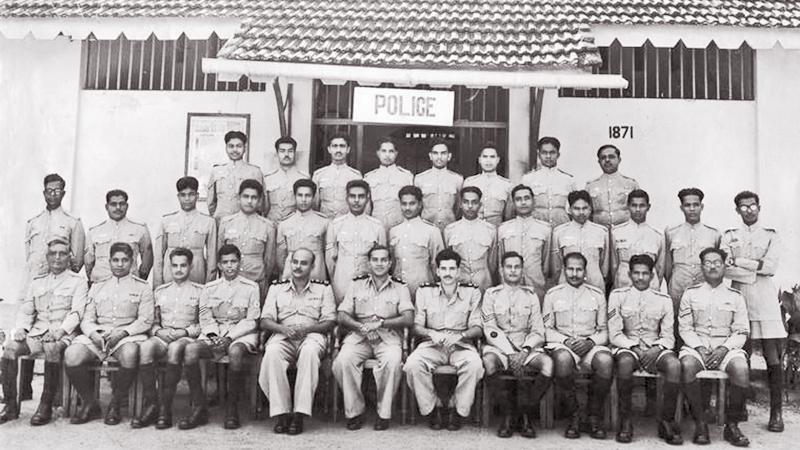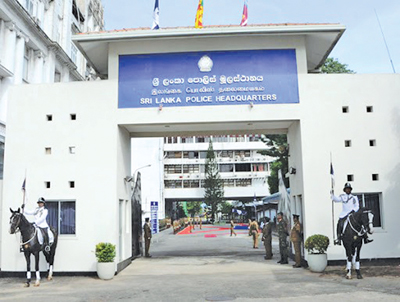
There is hardly a person among us who has not been to a police station at least once in their life. But it is no secret that in the present society only a handful of police officers have created a somewhat negative attitude towards the police in society due to some actions.
Although we see police officers every day, and occasionally have to liaise with the police, many are unaware of how the police originated and how it evolved to the present day. So this article is about the beginning of policing and how it gradually evolved to its present state.
Despite occupying Ceylon’s coastal areas for a long time, the Portuguese did not show much interest in making major changes to the country’s civilian administration. However, with the subsequent Dutch conquest of the country, the basic concept of the police was discussed among top officials.
Accordingly, around 1659, the Colombo Municipal Council (CMC) passed a resolution appointing guards to patrol the city at night, and accordingly four soldiers were deployed for this task.
Dutch
 The Dutch also have the honour of building some of the first police stations in the country. They set up about three police stations, one at the north gate of Colombo Fort, another near the road connecting Fort and Pettah, and another near the Cayman Gate in Pettah.
The Dutch also have the honour of building some of the first police stations in the country. They set up about three police stations, one at the north gate of Colombo Fort, another near the road connecting Fort and Pettah, and another near the Cayman Gate in Pettah.
In addition, the office of a Dutch officer in the area where the present Supreme Court complex is located also served as a police station.
In 1796, the English were able to occupy the coastal areas from the Dutch, and for a time the army was responsible for maintaining law and order in the country.
The Fiscal Office, then abolished in 1797, was re-established, and Frederick North, then British Governor of Ceylon, delegated the task of overseeing the police to Magistrates and officers known as “police judges”
In 1805 the duties of the police were clearly defined. In addition to matters relating to the safety and well-being of the people, the police were entrusted with the task of preventing crime and maintaining law and order.
Through an Act introduced in 1806, the city of Colombo was divided into 15 divisions and one police constable was appointed to oversee each division. In addition, a police constable was appointed for each village every year, whose role was to maintain law and order in the relevant village.
The then British Governor sought the assistance of India in the search for an officer capable of reorganising the police service in the country. The English officer who was the Governor of Bombay at that time recommended G.W.R. Campbell, who was the head of police of Ratnagiri area in India, for that task.
Amendment
Accordingly, Campbell was elected to the post of head of police and on September 3, 1866 he assumed duties as the Chief Superintendent of Police. About a year later, in 1867, an amendment was made to the Police Service Act to change the post of Chief Superintendent of Police to “Inspector General of Police (IGP)”, which is considered to be the beginning of the police service. Campbell played a significant role in reorganising the police as an efficient institution.
The Police Headquarters was established in 1867 and the Maradana area was selected for this purpose. In 1870, a group of rebels attacked the police headquarters. Police were able to contain the attack but the building of the police headquarters was damaged.
The Criminal Investigation Department (CID) was also set up in the same year. In 1882, two three-wheeled bicycles were purchased for the police, making it the first time in Sri Lanka that the police had a vehicle. In 1892 the provision of free uniforms and accommodation to police officers began, and a special allowance for good calculus was also introduced.
Thomas Oswin, who later served as the Chief Justice’s Secretary, was appointed the first Superintendent of Police in Colombo.
Ceylonese
In addition, five police constables, ten police sergeants and 150 clerks were appointed. Lokubanda Dunuwila, who was in charge of the Uva District, was the Superintendent of Police in charge of the Kandy District. Dunuwila also goes down in history as the first Ceylonese Superintendent of Police. In 1847, in addition to the then existing posts, the post of Sub-Inspector (SI) of Police was established.
Richard Aluvihare became the IGP on June, 1, 1947, making history as the first Ceylonese IGP. After independence in 1948, the Police Department, which was under the Ministry of Home Affairs, was transferred to the Ministry of Defence, and IGP Aluvihare played a significant role in transforming the police, which was active on colonial concepts, into a local body.
He worked to introduce new features to the Police Department such as welfare, investigations, crime detection and prevention. In 1952, women were recruited into the police force for the first time.
